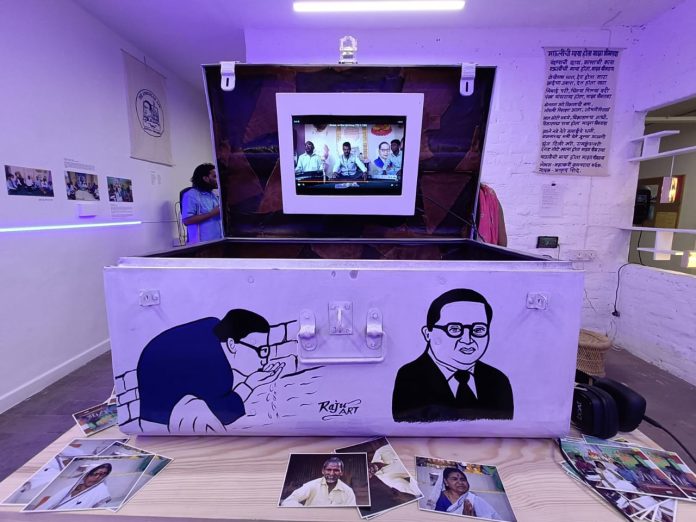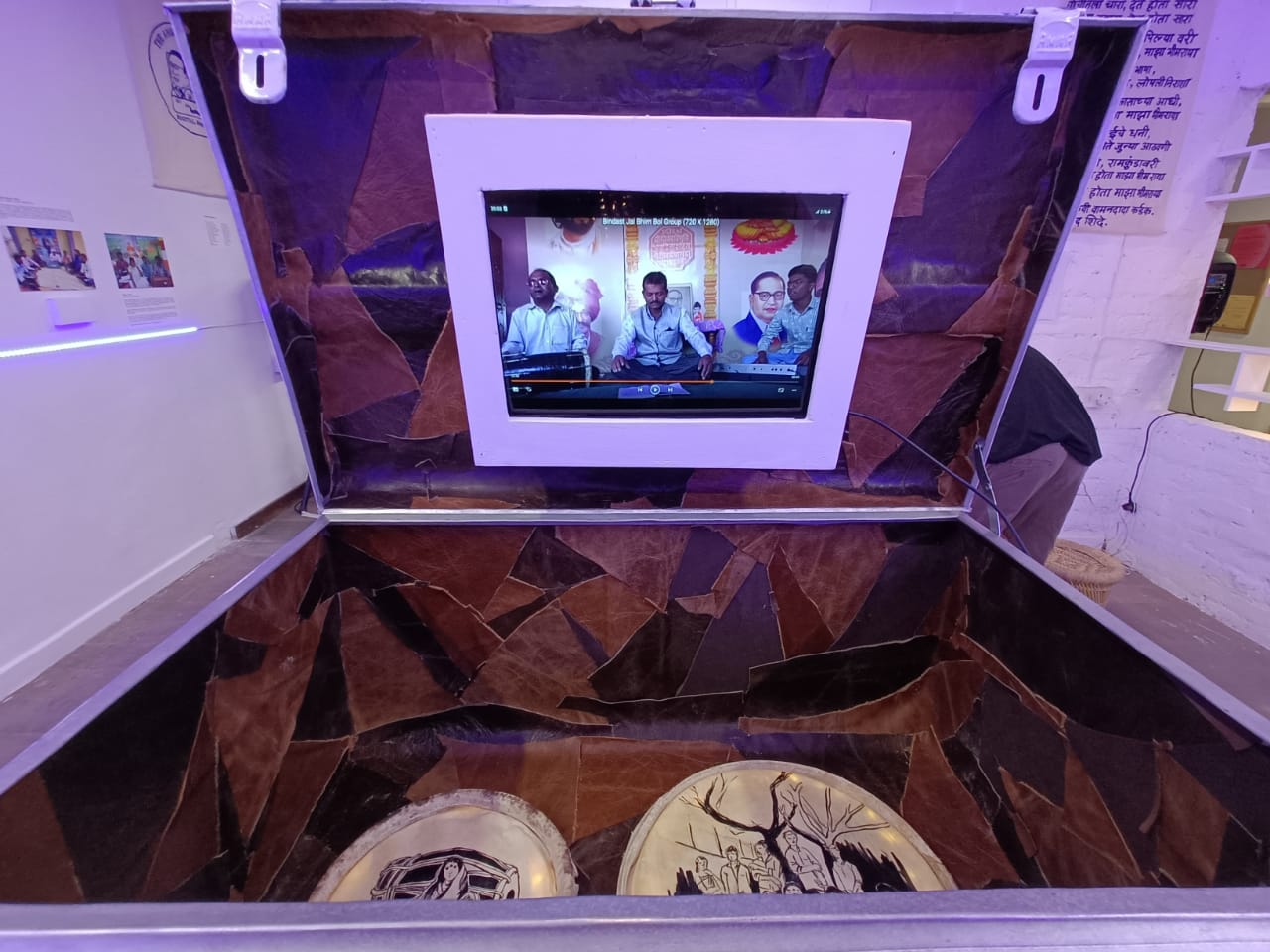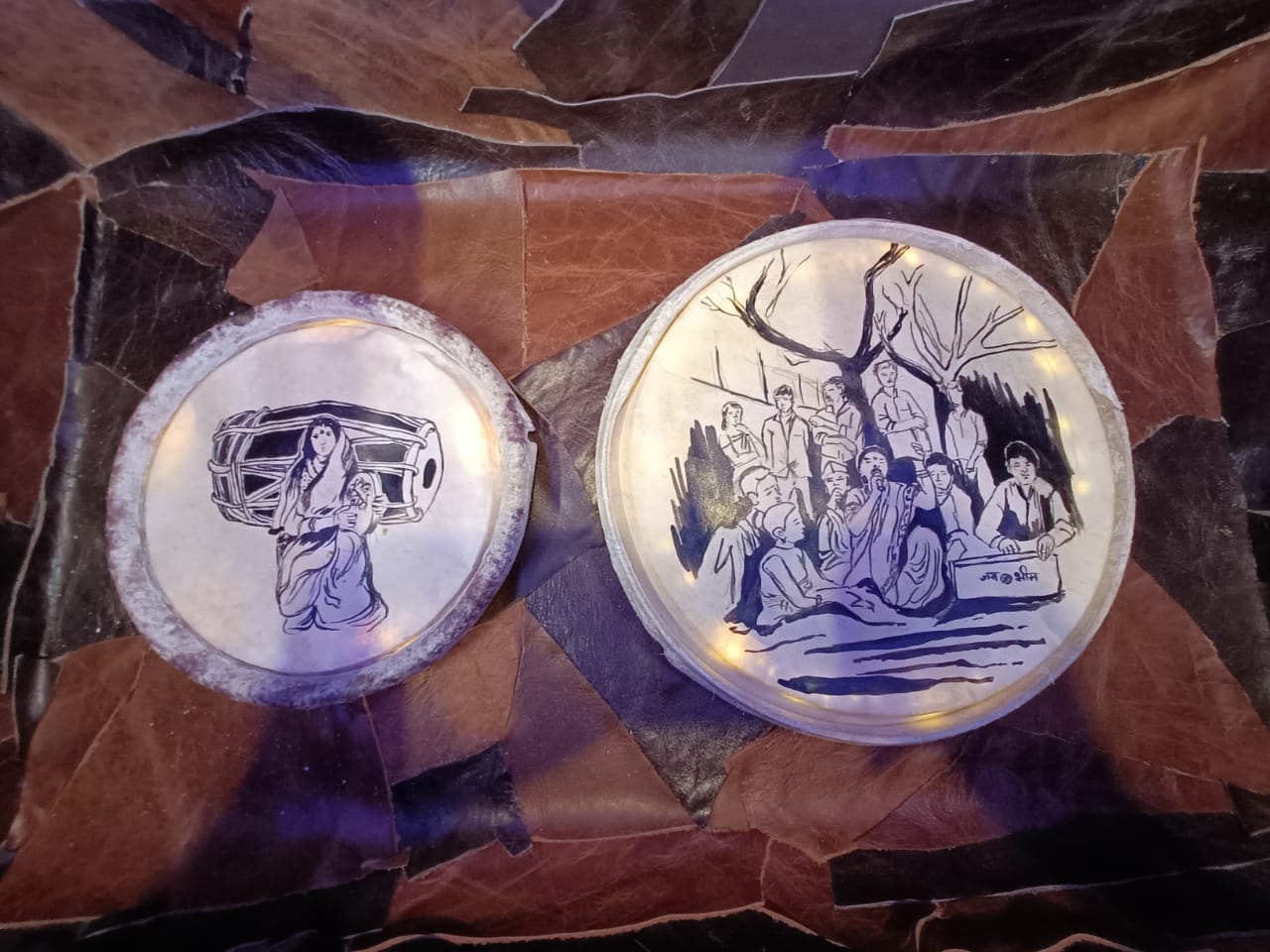
The project aims to collect Maharashtra’s long history of social reform, accessing 500-year-old traditions of song-writing, performances and poetry against caste-based exploitation and untouchability.
Riya Talitha and Aatika Singh| TwoCircles.net
NEW DELHI — The Ambedkar Age Digital Bookmobile (AADB), an audio-visual art project asserting culture, and through regional singing traditions, has received decent press coverage, buzz, and notice. But there’s still no way of understanding it fully until you see it in person. AADB is a physical as well as a digital archive, a community resource meant to be a tool for public interaction and education, and also an interactive art exhibition covering the huge breadth and length of the diverse radical traditions of Maharashtra.
This project by documentary filmmaker Somnath Waghmare and public intervention artist Smita Rajmane, aims to collect Maharashtra’s long history of social reform, accessing 500-year-old traditions of song-writing, performances and poetry against caste-based exploitation and untouchability. It fills a certain lacuna where oral traditions are rarely documented.
It is a history that speaks with multiple voices ranging from Saint Tukaram, Saint Chokhamela and Vamandada Kardak, and Bhimrao Kardak to contemporary, popular singers like Adarsh Shinde. The tradition borrows from the historic satysashodaki jalsa, ambedkarwadi salsa as well as the Lok shahiri tradition of Maharashtra. The project seeks to document singers and artists who mostly hail from rural locations and are not very well known in the urban spaces of cities. The singers have been singing anti-caste songs for many decades as well as performing them. Every year they perform at different gatherings such as the one held at Chaityabhumi Dadar on the occasion of Ambedkar’s death anniversary observed as Mahaparinirvan Din on the 6th of December, Deekshabnhumi Nagpur on the 14th of October, Bhima Koregaon on the 1st of January, Mahad on the 20th of March etc. The list is definitely not exhaustive.

Waghmare explains that the criteria for inclusion of artists and groups in the Bookmobile are that they have to be not commercially successful, from Dalit backgrounds, and explicitly Ambedkarite, in contrast to groups like the Samat Kala Manch. The artists and politics of the latter consolidate both Ambedkarism and Marxism. This set of requirements is essential to the projects, as animated in the name ‘Ambedkar Age’ because they reflect culture and legacy that has thus far been so “ephemeral” that it seems non-existent in traditional histories and mainstream understandings.
“We need to document actually; this is the way to give details and tell the world our story. And [the artists] are very happy that someone has come to document,” says Waghmare.
The first thing you notice walking into the FICA Reading Room in Delhi’s Lado Sarai Marg, where the Ambedkar Digital Bookmobile is hosted till the 20th of August, is the fluorescent blue light shining out of the Project_Space. Walk in, and you’re in a cyber-punk Dalit-futurist world of posters, stickers, pamphlets, and small screens with headphones attached to the walls. At the centre is the Bookmobile – a white metal box with a mechanism to hold an iPad or tablet embedded inside the lid, so people can hear and watch the collected songs and interviews with artists that comprise the project.
The Bookmobile is decorated with paintings of events from Ambedkar’s life, Ashoka chakras, and likenesses of the Phule’s by an artist called Raju, who normally paints the backs of lorries. Another artist, Arshad has painted the trunk enhancing the overall visual aesthetic of the portable exhibition.

Bright blue fairy lights illuminate the project’s chronology from conception to completion, with posters, photographs, and text cards in beautiful blue ink – done by the same artist who painted the Bookmobile. Another wall is hung with lightboxes depicting collages of the musician alongside screenshots of maps showing the distances they traverse to perform. This is Rajmane’s influence as her art practice always features mapping and the meaning of movement and space. “This project is about journeys”, she explains. It is the generational transference of the community’s heritage that she foregrounds while speaking. The digital MP4 format helps broaden the accessibility of the project.
The collection of songs, for her, goes beyond the social, political and historical as they form an emotional terrain for the singers and performers. Their significance lies in spreading the anti-caste Ambedkarite thought and vision to the masses in layman’s vocabulary for decades. An instance is Bhimrao Kardak who sang the political speeches of Babasaheb.
A small table with low seats placed at the front of the room, covered by excerpts from academic texts, printouts of Ambedkari shahiri lyrics translated in English, Jyotirao Phule’s Gulamgiri as well, etc act as appendixes to the exhibition complimenting its form.
Through documentation of these embodied histories of anti-caste resistance, the project seeks to raise awareness around contemporary Dalit popular and political song performances within the community. To encourage discussion and dialogue, the bookmobile will travel to a variety of public spaces including educational institutions, community halls, gardens and libraries in both urban and rural areas. Imagining the ‘digital bookmobile’ as a portable multi-media archive with the potential to navigate distances and cultures of resistance with economical means, Smita and Somnath hope to catalyse new avenues of understanding and meaning around the documentation of ephemeral elements of performance, songs and poetry.
On an overhead shelf rest that most quintessential and familiar of Ambedkarite symbols – a metal bust of the icon, overseeing the room through his steel-rimmed glasses. Across it is another shelf, with a statue of the Buddha that Rajmane herself brought.
Rajmane’s use of colour, text, and space is representative of her oeuvre of art installations – her previous work includes a giant chess set, a reproduction of an eye clinic, and the interior of an auto rickshaw that people can sit in. Her art is always detailed, intentional, and imbued with meaning, socio-political realities, and historical events.
From the painted daflis (folk music hand drums) to the scrap leather lining of the Bookmobile, the music, photographs, illustration, and the blue tones throughout the material “researches, unravels, highlights” and celebrates Ambedkarite culture and community.
The project is supported by a grant from the Foundation of Indian Contemporary Art Public Art Grant, a Delhi-based non-profit organisation that aims to broaden the audience for contemporary Indian art, enhance opportunities for artists, and establish a continuous dialogue between the arts and the public through education and active participation in public art projects.
“This music has taken me to see the world,” she says, explaining her group’s dedication to spreading Ambedkarite values across the country for little to no material benefits.
The AADB is a very practical project with quite a systematic process. The process of tracking down song lyrics and artists without much social media or written contact information, especially those from different generations, is challenging. But Waghmare, whose passion for documentation defines his body of work, is in his element while pursuing these threads.
Rajmane and Waghmare feel they have barely begun because of the sheer number of groups, songs, and engagements they want to bring to life. Even with that, they have wide-ranging plans of expanding the Bookmobile’s collection into other States someday and across India. Waghmare, in particular, hopes to travel to Tamil Nadu after Maharashtra to document the rich history of gaana artists in the South. Smita on the other hand hopes for an interregional collaboration between the singers of Uttar Pradesh and Maharashtra across content, genre and style. The duo plan to build the archive further by documenting singers from other genders as well, in different languages.
Riya and Aatika are Delhi-based fellows at SEEDS-TCN Mentorship Program.

